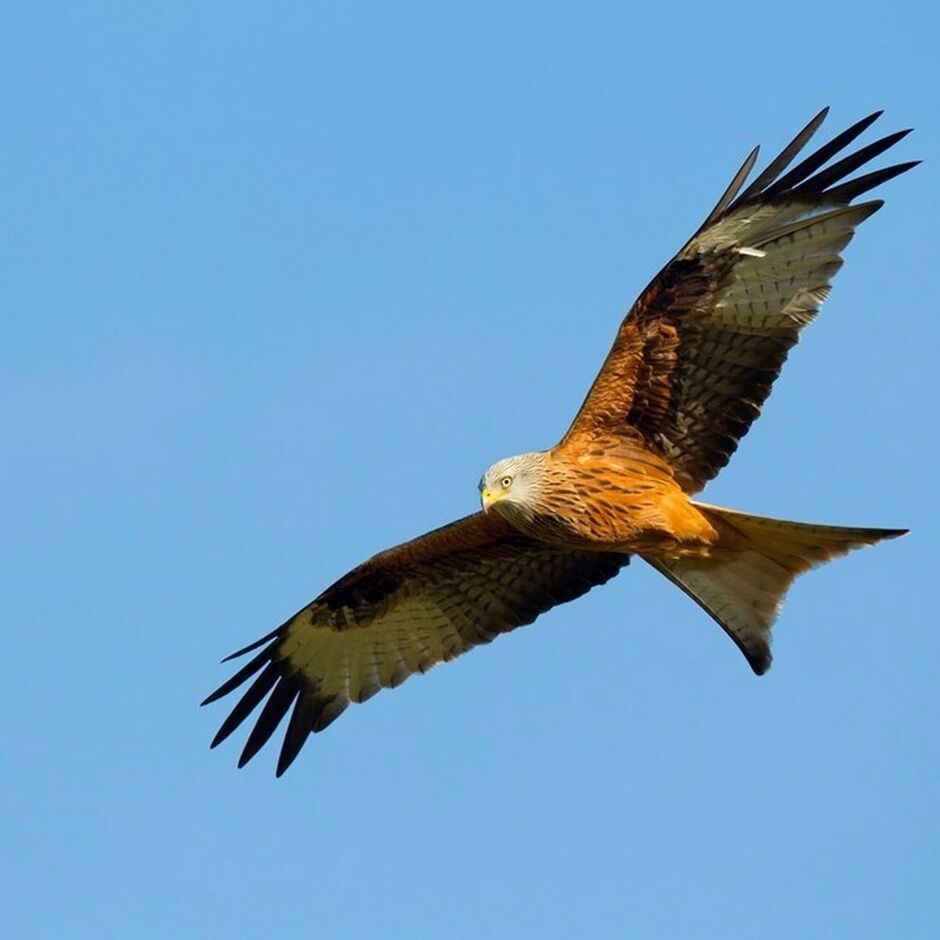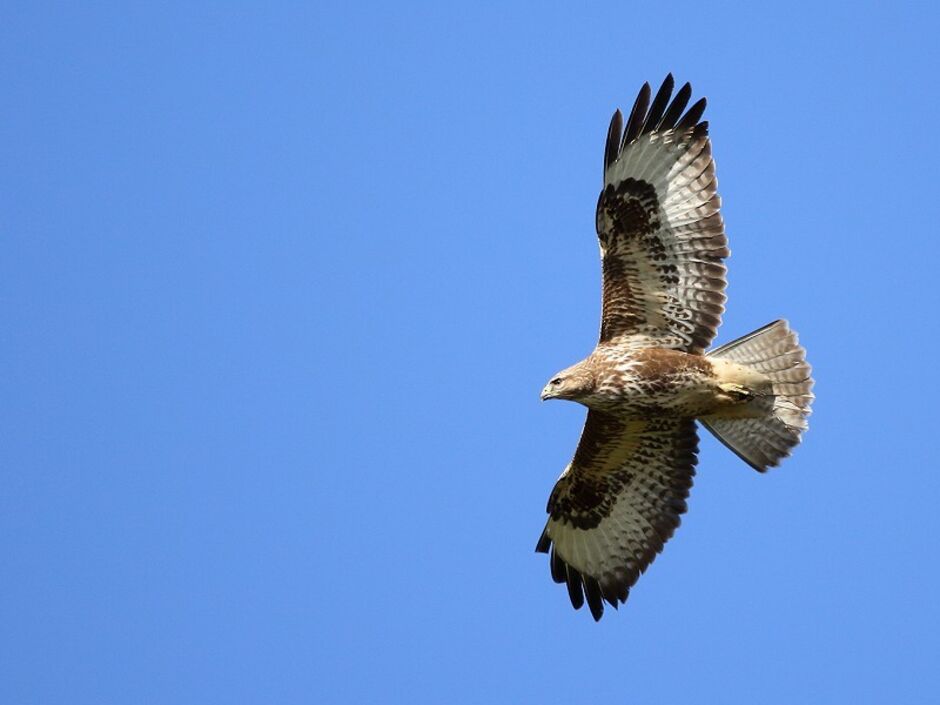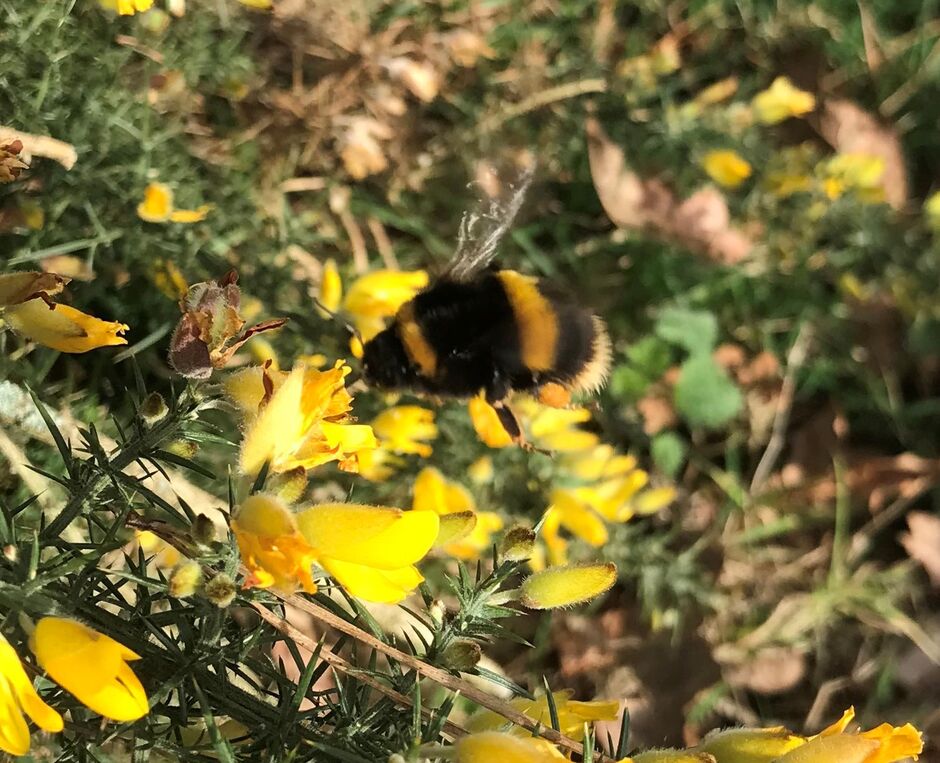At Bramley we have a wealth of fauna and flora, in our 110 acres, which provides a joyous background to our golf game. From large Roe Deer to the smallest orchid, there is an opportunity for mindfulness moments in everyone's round.
This page is dedicated to the monthly highlights and spotlights some of the many species that can be seen around the course.
March 2022
This month I thought it would be of interest to highlight creatures great and small that may be seen around the course! The largest birds that can be spotted are the Red Kite (Milvus milvus ) and the Common Buzzard (Buteo buteo). Although the Kite is a much larger bird, with wingspan up to 2 m, they can be tricky to tell apart in the air. Look for the reddish back of the Kite with a distinctive V -shaped tail. The Buzzard is a lot browner with a rounded striped tail, and we can sometimes spot them on the ground on the fairways. It's important to mention that these birds should not be approached as they are well equipped with some fairly impressive talons! As we come into Spring you may be lucky enough to spot them in courtship flight, or in the aerial "dog fights" with local crows who are trying to defend their patch.
The day after the storm I took a wander around the course to see what, if anything, was still in one piece. Right next to the broken branch of the Scot's Pine tree to the left of the eighth green there was a beautiful gorse bush flowering. There is a traditional saying "When gorse is out of bloom, kissing is out of season". This highlights the fact that it is a long flowered plant, with Common gorse, Ulex europeaus, flowering for the first half of the year, followed by Western gorse, Ulex gallii flowering in the second half. Gorse is a member of the pea family and if you look closely at the flowers you can see that they resemble sweet pea and broad bean flowers in terms of shape and structure.
On the small creature end of the scale, I was delighted to find a rather noisy bumblebee feeding on the gorse! Not being an insect specialist I took the opportunity to find out more on Google. www.bumblebeeconservation.org is an interesting link for those wishing to identify their own local bees. Our Bramley bee was (I think) Bombus terrestris, a worker Buff tailed Bumblebee, with full pollen sacs and very busy manner, please see photo below. The prickly gorse and the bee are definite incentives to land on the green on the 8th and not end up in the bushes.
Thank you to all who have sent in comments and suggestions. Please feel free to send your feedback or suggestions to: sarah@bramleygolfclub.co.uk , Sarah has kindly agreed to pass these onto me and all will be answered.










 Common Gorse, Ulex europeaus (flower in close up)
Common Gorse, Ulex europeaus (flower in close up)




